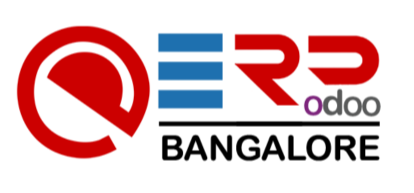Understanding the Importance of Lead Generation in Odoo
Why Lead Generation Matters:

Lead generation is the process of attracting and converting prospects into potential customers or leads. It forms the foundation of a robust sales funnel, facilitating the continuous flow of qualified leads to the sales team. Without an effective lead generation strategy, businesses struggle to sustain growth and may find themselves grappling with inconsistent sales figures and revenue streams.
In today’s digital era, where consumers have access to an abundance of information and choices, traditional outbound marketing approaches are becoming less effective. Lead generation, especially inbound lead generation, emerges as a more cost-effective and targeted method of acquiring leads. By creating valuable content, optimizing online presence, and engaging with prospects through various touchpoints, businesses can attract potential customers who are actively seeking solutions to their problems.
The Role of Contact Pages in Lead Generation:

Contact pages serve as the gateway for prospects to initiate communication with a business. Whether it’s inquiring about products/services, seeking support, or providing feedback, contact pages provide a direct channel for interaction. As such, optimizing contact pages for lead generation is essential for maximizing their effectiveness.
- Clear Call-to-Action (CTA): Contact pages should feature prominent and compelling CTAs that prompt visitors to take action, whether it’s filling out a form, initiating a chat, or making a call.
- Streamlined Form Design: Lengthy or complicated forms can deter prospects from reaching out. Simplifying form fields and minimizing required information can improve conversion rates.
- Personalization: Tailoring contact page content based on visitor demographics, behavior, or past interactions can enhance engagement and increase the likelihood of capturing qualified leads.
- Responsive Design: With the increasing use of mobile devices, ensuring that contact pages are mobile-friendly is crucial for providing a seamless user experience across all platforms.
- Trust Signals: Incorporating trust elements such as testimonials, certifications, and privacy assurances can instill confidence in visitors and encourage them to share their contact information.
Challenges in Lead Generation Through Contact Pages:

While contact pages offer immense potential for lead generation, they also present certain challenges that businesses must address to optimize their effectiveness.
- High Bounce Rates: Contact pages may experience high bounce rates if they lack compelling content, have poor design, or fail to instill trust in visitors. Conducting A/B testing and analyzing user behavior can help identify areas for improvement.
- Spam and False Leads: Contact forms are susceptible to spam submissions and false leads, which can clutter databases and waste resources. Implementing CAPTCHA, email verification, or other anti-spam measures can mitigate this risk.
- Integration with CRM Systems: Effective lead management requires seamless integration between contact pages and Customer Relationship Management (CRM) systems. Ensuring compatibility and automating lead capture and distribution processes can streamline operations.
- Data Privacy Compliance: With the implementation of stringent data privacy regulations such as GDPR and CCPA, businesses must ensure that their contact pages adhere to regulatory requirements regarding consent, data storage, and security.
- Lead Quality and Nurturing: Not all leads captured through contact pages may be immediately sales-ready. Implementing lead scoring, segmentation, and nurturing workflows can help prioritize leads and guide them through the sales funnel effectively.
Optimizing Your Website Contact Page with Odoo
- Designing an Engaging Contact Form
The contact form is the centerpiece of your contact page, and its design plays a pivotal role in capturing user attention and encouraging interaction. With Odoo’s intuitive form builder, you can create visually appealing and user-friendly contact forms tailored to your specific requirements. Here are some tips for designing an engaging contact form:
- Keep it concise: Avoid overwhelming users with a barrage of fields. Stick to essential fields such as name, email, and message to streamline the submission process.
- Visual appeal: Utilize clean layouts, attractive colors, and intuitive design elements to make the form visually appealing and easy to navigate.
- Mobile responsiveness: Ensure that your contact form is optimized for mobile devices, as an increasing number of users access websites on smartphones and tablets.
- Clear call-to-action: Use compelling language and visually prominent buttons to prompt users to submit their inquiries.
- Adding Relevant Fields for Better Lead Qualification
A well-crafted contact form goes beyond collecting basic information; it serves as a valuable tool for lead qualification and segmentation. By adding relevant fields to your contact form, you can gather valuable insights about your leads and tailor your responses accordingly. Here are some examples of fields you can incorporate:
- Company name: Useful for B2B businesses to identify potential clients and tailor their communication strategy accordingly.
- Industry or sector: Helps categorize leads based on their specific needs and preferences.
- Preferred contact method: Allows users to specify their preferred mode of communication, whether it’s email, phone, or in-person meetings.
- By collecting this additional information upfront, you can streamline your lead management process and ensure that each inquiry receives personalized attention.
- Implementing Captivating Call-to-Actions (CTAs)
A compelling call-to-action (CTA) can make all the difference in converting website visitors into leads. Whether it’s a simple “Contact Us” button or a more creative CTA tailored to your brand voice, Odoo provides the flexibility to implement CTAs that resonate with your target audience. Here are some best practices for crafting captivating CTAs:
- Be clear and concise: Use action-oriented language that clearly communicates the desired outcome, such as “Get in Touch” or “Request a Demo.”
- Create a sense of urgency: Encourage immediate action by incorporating time-sensitive language or limited-time offers into your CTAs.
- A/B testing: Experiment with different CTA designs, placement, and messaging to identify which variations yield the best results.
- By continually refining your CTAs based on user feedback and performance metrics, you can optimize conversion rates and drive more inquiries through your contact page.
- Integrating Odoo CRM with Your Contact Page
Seamless integration with Odoo CRM allows you to centralize lead management processes and streamline communication between your website’s contact page and your sales team. By capturing contact form submissions directly into Odoo CRM, you can automate lead assignment, track interactions, and nurture leads through the sales funnel more effectively. Here’s how you can integrate Odoo CRM with your contact page:
- Form integration: Use Odoo’s form builder to create custom contact forms and configure them to sync directly with Odoo CRM.
- Lead routing: Set up automated workflows to route incoming leads to the appropriate sales representatives based on predefined criteria such as location or industry.
- Activity tracking: Keep tabs on lead interactions, such as email exchanges or phone calls, within Odoo CRM to ensure timely follow-ups and personalized communication.
- By integrating Odoo CRM with your contact page, you can streamline lead management processes, improve collaboration across teams, and ultimately drive more conversions.
- Customizing Confirmation and Thank You Pages
The confirmation and thank you pages that users encounter after submitting a contact form are valuable real estate for further engagement. Instead of settling for generic messages, leverage Odoo’s customization capabilities to create personalized and impactful post-submission experiences. Here are some ideas for customizing confirmation and thank you pages:
- Express gratitude: Take the opportunity to thank users for reaching out and express your appreciation for their interest in your products or services.
- Provide additional resources: Direct users to relevant blog posts, case studies, or product demos that can further educate them about your offerings.
- Encourage social sharing: Invite users to follow your social media profiles or share their experience with their network, amplifying your brand reach and credibility.
- By customizing confirmation and thank you pages, you can leave a lasting impression on users and foster stronger relationships with potential customers.
Introduction to Odoo
Overview of Odoo:
Odoo, formerly known as OpenERP, is a powerful open-source business application suite that encompasses a broad range of modules to cater to diverse business needs. Developed in Python programming language, Odoo provides businesses with a modular approach, allowing them to choose and integrate specific modules according to their requirements. Whether it’s managing sales, inventory, accounting, CRM, HR, or website operations, Odoo offers a centralized platform to streamline and automate various business processes.
The core strength of Odoo lies in its flexibility and scalability. With over thousands of modules available, businesses can customize and extend the functionality of Odoo to adapt to evolving business requirements. Moreover, Odoo’s user-friendly interface and intuitive design make it accessible to users across different levels of technical expertise, empowering them to leverage its capabilities effectively.
Key Features and Benefits:
Odoo’s feature-rich environment offers a plethora of benefits to businesses, enabling them to optimize their operations and drive efficiency. Some key features and benefits of Odoo include:
- Integrated Approach: Odoo integrates seamlessly with various business functions, eliminating the need for disparate systems and reducing data silos. This integrated approach facilitates real-time information sharing and enhances collaboration across departments.
- Modular Structure: Odoo’s modular architecture allows businesses to start with essential modules and scale up as their needs evolve. Whether it’s managing sales, inventory, accounting, or project management, Odoo offers a modular approach to tailor the system according to specific requirements.
- Customization Capabilities: With Odoo’s open-source nature, businesses have the freedom to customize and extend the software according to their unique workflows and processes. Whether it’s developing custom modules or integrating third-party applications, Odoo provides a flexible framework for customization.
- Cloud-Based Deployment: Odoo offers both on-premise and cloud-based deployment options, providing businesses with the flexibility to choose the deployment model that best suits their requirements. Cloud-based deployment offers scalability, accessibility, and cost-efficiency, making it an ideal choice for small and medium-sized enterprises (SMEs).
- Cost-Effectiveness: Compared to traditional enterprise software solutions, Odoo offers a cost-effective alternative with its open-source model. Businesses can leverage the community edition of Odoo for free or opt for the enterprise edition, which provides additional features and support services at a fraction of the cost of proprietary software solutions.
- User-Friendly Interface: Odoo’s intuitive interface and user-friendly design make it easy for users to navigate and operate the system. With minimal training, employees can quickly adapt to Odoo and harness its capabilities to streamline their workflows.
- Mobile Accessibility: Odoo’s mobile application allows users to access and manage their business operations on the go. Whether it’s checking sales orders, updating inventory, or responding to customer inquiries, Odoo’s mobile app empowers users to stay connected and productive from anywhere.
Why Odoo for Lead Generation?
In today’s competitive business environment, lead generation plays a pivotal role in driving sales and revenue growth. Odoo offers a comprehensive set of tools and functionalities to support lead generation efforts effectively. Here’s why Odoo stands out as an ideal solution for lead generation:
- CRM Integration: Odoo’s integrated CRM module serves as a central repository for managing customer interactions, tracking leads, and nurturing prospects through the sales funnel. By capturing leads directly within the CRM system, businesses can streamline lead management processes and ensure no opportunity slips through the cracks.
- Marketing Automation: Odoo’s marketing automation features enable businesses to create targeted campaigns, send personalized emails, and track customer engagement metrics. By automating repetitive tasks and delivering relevant content to prospects, businesses can nurture leads effectively and move them closer to conversion.
- Website Integration: Odoo’s website builder allows businesses to create professional-looking websites with seamless integration to their CRM and marketing automation workflows. By capturing leads directly from the website and syncing them with the CRM system, businesses can streamline lead generation efforts and provide a seamless user experience to visitors.
- Reporting and Analytics: Odoo’s reporting and analytics tools provide valuable insights into lead generation performance, campaign effectiveness, and conversion metrics. By analyzing key metrics such as lead acquisition cost, conversion rates, and ROI, businesses can optimize their lead generation strategies and allocate resources more effectively.
- Scalability and Flexibility: As businesses grow and evolve, their lead generation requirements may change. Odoo’s modular architecture and flexible framework allow businesses to adapt their lead generation strategies to accommodate changing needs. Whether it’s scaling up campaigns, adding new channels, or integrating with third-party tools, Odoo provides the flexibility to meet evolving business requirements.
Strategies for Driving Traffic to Your Contact Page
Search Engine Optimization (SEO) Techniques
Search Engine Optimization (SEO) is the cornerstone of digital marketing, aiming to enhance a website’s visibility in search engine results pages (SERPs). Implementing SEO techniques tailored to your contact page can significantly boost its traffic. Here are some effective strategies:
- Keyword Optimization: Conduct thorough keyword research to identify relevant terms and phrases potential visitors might use to find your contact page. Incorporate these keywords strategically in your page title, meta descriptions, headings, and body content to improve your search engine ranking.
- Quality Content Creation: Develop informative and engaging content related to your business niche. By publishing high-quality blog posts, articles, or case studies, you can attract organic traffic to your website, increasing the likelihood of visitors navigating to your contact page.
- Mobile Optimization: With the increasing use of mobile devices for web browsing, optimizing your contact page for mobile responsiveness is imperative. Ensure that your page loads quickly and displays correctly across various mobile devices to provide a seamless user experience, consequently improving its search engine ranking.
- Internal Linking: Incorporate internal links within your website’s content to direct visitors to your contact page from other relevant pages. By interlinking strategically, you can enhance the visibility of your contact page and encourage users to explore further.
Leveraging Social Media Channels
Social media platforms offer a vast opportunity to promote your contact page and engage with your target audience effectively. Here’s how you can leverage social media channels to drive traffic to your contact page:
- Share Compelling Content: Create visually appealing and shareable content that resonates with your social media followers. Whether it’s informative blog posts, engaging videos, or captivating infographics, regularly share content that directs users to your contact page for further inquiries or assistance.
- Engage with Your Audience: Actively engage with your followers by responding to comments, messages, and mentions promptly. By fostering meaningful interactions and providing valuable insights, you can build trust and credibility, encouraging users to visit your contact page for more personalized assistance.
- Run Contests and Giveaways: Organize contests or giveaways on your social media platforms, encouraging users to participate by visiting your contact page or subscribing to your newsletter. This not only drives traffic to your contact page but also helps expand your social media reach and grow your audience.
- Utilize Social Media Ads: Invest in targeted social media advertising campaigns to promote your contact page to specific demographics or user segments. By leveraging advanced targeting options offered by platforms like Facebook, Instagram, or LinkedIn, you can reach potential customers who are more likely to engage with your business.
Email Marketing Campaigns
Email marketing remains a powerful tool for nurturing leads and driving traffic to your contact page. Here are some effective strategies for incorporating your contact page into your email marketing campaigns:
- Personalized Email Content: Segment your email list based on demographics, interests, or past interactions, and tailor your email content accordingly. Include compelling calls-to-action (CTAs) that encourage recipients to visit your contact page for inquiries,
- Lead Magnets and Opt-in Forms: Offer valuable lead magnets such as ebooks, whitepapers, or exclusive discounts in exchange for users’ email addresses. Incorporate opt-in forms strategically within your email campaigns, directing subscribers to your contact page to claim their offer or learn more about your products/services.
- Automated Drip Campaigns: Set up automated email drip campaigns that guide subscribers through a series of nurturing emails, gradually leading them towards contacting your business. Include links to your contact page in each email, making it easy for recipients to reach out whenever they’re ready.
- A/B Testing and Optimization: Continuously optimize your email campaigns through A/B testing various elements such as subject lines, CTAs, and email designs. By analyzing metrics like open rates, click-through rates, and conversion rates, you can refine your approach and drive more traffic to your contact page over time.
Paid Advertising Strategies
While organic methods are effective, paid advertising can provide an immediate boost in traffic to your contact page. Here are some paid advertising strategies to consider:
- Google Ads: Launch targeted pay-per-click (PPC) campaigns on Google Ads, bidding on relevant keywords related to your business and contact page. Craft compelling ad copy and landing pages that entice users to click through and contact your business for inquiries or assistance.
- Social Media Advertising: Utilize paid advertising options on social media platforms like Facebook, Instagram, Twitter, or LinkedIn to promote your contact page to specific audience segments. Leverage demographic targeting, interests, and behaviors to reach users who are more likely to engage with your business.
- Display Advertising: Explore display advertising networks such as Google Display Network or AdRoll to place visual ads on websites frequented by your target audience. Design eye-catching banner ads that encourage users to click through to your contact page for further engagement.
- Remarketing Campaigns: Implement remarketing campaigns to re-engage users who have previously visited your website but haven’t contacted your business yet. Show targeted ads across various channels to remind them of your offerings and encourage them to revisit your contact page to take the next step.
Analyzing and Improving Lead Generation Efforts
Utilizing Odoo’s Analytics Tools
Odoo, a comprehensive suite of business management software, offers powerful analytics tools that enable businesses to gain valuable insights into their lead generation efforts. By leveraging Odoo’s analytics module, businesses can track various metrics such as website traffic, conversion rates, and lead sources. These insights allow businesses to identify which channels are driving the most leads, enabling them to allocate resources more effectively.
One of the key features of Odoo’s analytics tools is its ability to create customizable dashboards and reports. Businesses can tailor these dashboards to display the specific metrics that are most relevant to their lead generation goals. Whether it’s tracking the performance of email marketing campaigns or monitoring social media engagement, Odoo provides the flexibility to analyze data in real-time and make informed decisions.
Additionally, Odoo’s analytics tools offer advanced segmentation capabilities, allowing businesses to target specific audience segments with personalized marketing messages. By segmenting leads based on demographics, behavior, or other criteria, businesses can tailor their marketing strategies to better resonate with their target audience, thereby increasing the likelihood of conversion.
A/B Testing Contact Page Elements
A/B testing, also known as split testing, is a method used to compare two versions of a webpage or marketing asset to determine which performs better in terms of generating leads. By systematically testing different elements of a contact page, such as the call-to-action (CTA) button, form fields, or layout, businesses can identify the most effective combinations that drive conversions.
For example, a business may create two versions of its contact page—one with a blue CTA button and another with a red CTA button—and randomly display each version to website visitors. By measuring metrics such as click-through rates and form submissions, businesses can determine which version yields higher conversion rates.
A/B testing is an iterative process that requires continuous experimentation and optimization. Through iterative testing, businesses can refine their contact page elements to maximize lead generation. This may involve testing different messaging, design elements, or placement of CTAs until the optimal combination is identified.
Gathering Feedback and Iterating
In addition to quantitative analytics, gathering qualitative feedback from leads and customers is essential for understanding their needs, preferences, and pain points. This feedback can be collected through various channels such as surveys, interviews, or social media listening.
By actively soliciting feedback from leads, businesses can gain valuable insights into their user experience and identify areas for improvement. For example, businesses may discover that a certain form field on their contact page is causing friction for users, leading to abandoned submissions. Armed with this insight, businesses can make informed adjustments to streamline the form and improve the user experience.
Iterative refinement is key to continuous improvement in lead generation efforts. By analyzing data, testing hypotheses, and incorporating feedback, businesses can optimize their strategies over time to generate more qualified leads and drive business growth.
Enhancing Lead Nurturing with Odoo
Automating Follow-Up Emails:
One of the primary challenges in lead nurturing is maintaining consistent communication with prospects without overwhelming them. Odoo offers a robust solution through its automated follow-up email feature. By leveraging this functionality, businesses can set up predefined email sequences triggered by specific actions or time intervals. This automation ensures that leads receive timely and relevant communication, nurturing them through the sales funnel.
Additionally, Odoo’s email automation allows for personalization at scale, enabling businesses to tailor messages based on lead demographics, behavior, or stage in the buying journey. This personal touch fosters a deeper connection with prospects and increases the likelihood of conversion. Moreover, Odoo provides analytics and tracking capabilities, allowing businesses to monitor the performance of their email campaigns and optimize them for better results continuously.
Creating Personalized Lead Nurturing Campaigns:
In today’s hyper-competitive market, generic, one-size-fits-all marketing strategies no longer suffice. Personalization has emerged as a key driver of customer engagement and conversion. Odoo empowers businesses to create highly personalized lead nurturing campaigns through its comprehensive CRM and marketing automation tools.
With Odoo, businesses can segment their leads based on various criteria such as demographics, behavior, interests, and engagement level. This segmentation enables targeted communication that resonates with the unique needs and preferences of each lead. Whether it’s delivering personalized content, product recommendations, or promotional offers, Odoo enables businesses to craft compelling campaigns that drive conversions.
Furthermore, Odoo’s intuitive drag-and-drop campaign builder simplifies the process of creating and launching sophisticated nurturing workflows. From welcome sequences to re-engagement campaigns, businesses can automate the entire customer journey, ensuring seamless and consistent communication across multiple touchpoints.
Implementing Lead Scoring Models:
Lead scoring plays a pivotal role in prioritizing leads and focusing resources on prospects with the highest potential for conversion. Odoo facilitates the implementation of robust lead scoring models that evaluate lead quality based on predefined criteria such as demographic information, engagement level, website interactions, and purchase intent.
By assigning numerical values to various lead attributes and behaviors, businesses can quantitatively assess the likelihood of a lead becoming a customer. Odoo’s flexible scoring system allows for customization to align with specific business objectives and sales processes. For instance, businesses can assign higher scores to leads demonstrating strong purchase intent or engagement with high-value content.
Moreover, Odoo integrates seamlessly with other data sources and applications, enabling businesses to incorporate external factors such as social media activity or email interactions into their lead scoring algorithms. This holistic approach ensures that lead scoring remains dynamic and adaptive to changing market conditions and customer behaviors.
Best Practices and Case Studies
Real-Life Examples of Successful Contact Page Optimization with Odoo
- Streamlining Communication Channels
One exemplary case study of contact page optimization with Odoo revolves around streamlining communication channels. By integrating Odoo’s contact form with various communication platforms such as email, live chat, and social media, businesses can cater to diverse customer preferences. This approach not only enhances accessibility but also facilitates prompt responses, resulting in improved customer satisfaction and engagement.
- Personalized Contact Forms
Another effective strategy involves leveraging Odoo’s customization capabilities to create personalized contact forms tailored to specific customer segments. By incorporating dynamic fields based on user demographics, interests, or previous interactions, businesses can gather relevant information efficiently. This not only streamlines the lead qualification process but also enhances the overall user experience, fostering a sense of personalization and trust.
- Analytics-Driven Optimization
Furthermore, integrating analytics tools within Odoo enables businesses to gain valuable insights into contact page performance. By tracking metrics such as conversion rates, bounce rates, and user behavior, organizations can identify pain points and optimization opportunities. For instance, A/B testing different contact page layouts or form designs can help determine the most effective approach for maximizing conversions and engagement.
Conclusion
By harnessing the power of Odoo and implementing best practices in lead generation, you can transform your website contact page into a potent tool for generating leads and opportunities. Remember, successful lead generation is not a one-time effort but an ongoing process of refinement and optimization.








